I think I first learned the term “umami” around 10 years ago, likely while watching America’s Test Kitchen [1] on PBS. I didn’t quite get a definition, but I got a lot of context regarding ingredients that added “umami,” notably mushrooms in vegetarian dishes. The term itself denotes a rich, savory, meaty flavor, which is something to be desired in many soups, sauces, and snacks. One ingredient that imparts a lot of umami is MSG, or monosodium glutamate – but also has a bit of a checkered reputation. And when I was cooking with it this past week, I thought it might be time to explore whether that reputation is warranted.
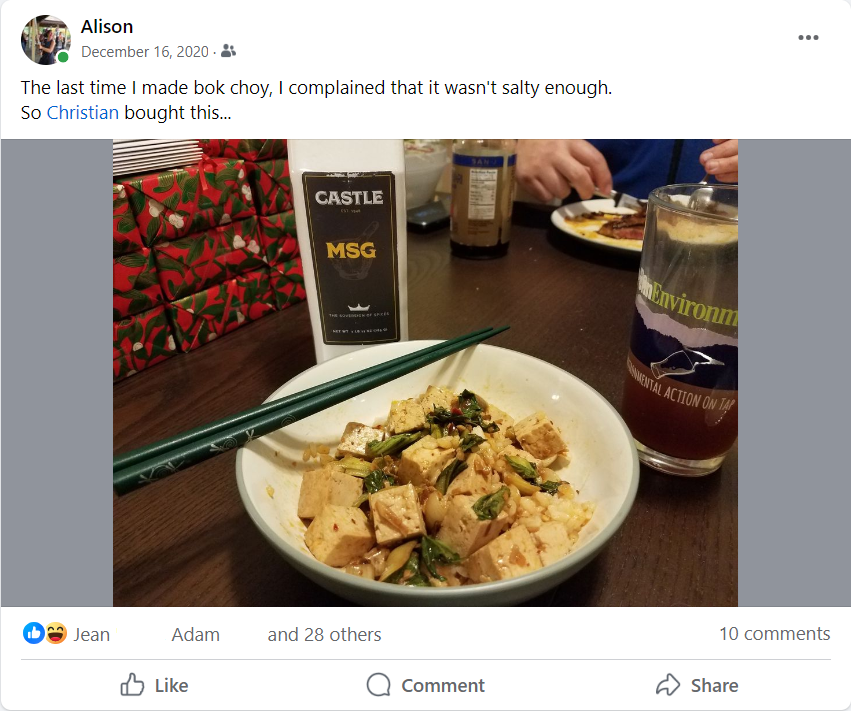
Unwarranted Stigma
MSG is a food seasoning made from L-glutamic acid (an amino acid) through fermentation of various types of sugars, such as corn, sugar cane, or molasses. It is stereotypically associated with Chinese food (and, admittedly, I have a Chinese cookbook in which MSG features prominently), but it is frequently found elsewhere, such as fast food, flavored chips, and processed meats. In addition to carrying an umami flavor, one of the things that MSG does is make your body produce more saliva – something you’d expect from many meaty, cheesy, salty foods anyway. What that means is that your saliva continually cleanses your palate between bites, and each bite of an already delicious food continues to taste flavorful. That property likely plays into a perception that MSG is addictive.
In the late 1960s, the nation saw a rise in concerns about negative health impacts of MSG, including headache, sweating, weakness, and fluttering heartbeat. A review of studies conducted since then concluded that concerns about “MSG symptom complex” (also unfortunately and embarrassingly called “Chinese restaurant syndrome”) are largely unfounded, in part because of flaws or assumptions made in some of those studies. [2] Nevertheless, the stigma persists, with many food labels denoting “MSG free” and many recipes I’ve encountered suggesting almost every umami-adding ingredient except MSG.
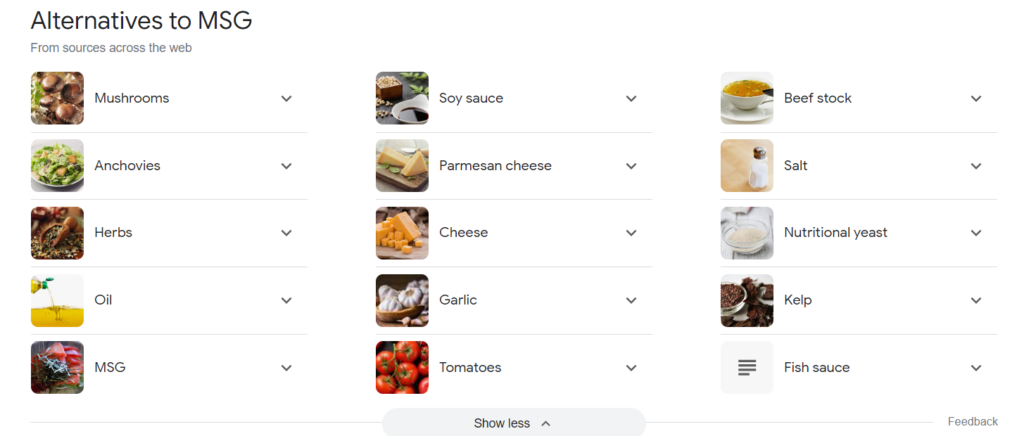
The Food and Drug Administration and World Health Organization have labeled it as a “generally recognized as safe” food (a term you may remember from my series on the Impossible Burger, which also includes a controversial, fermented, umami ingredient [3]). While it is true that a small percentage of the population may experience a sensitivity to MSG, most of us do not. Furthermore, the FDA states that those who are sensitive are not likely to experience symptoms unless they consume 3 grams (1/2 tsp) or more of MSG without food. Meanwhile, Cleveland Clinic points out that since MSG is present in a lot of processed foods, it may not actually be the MSG causing the issue, but other commonly present ingredients, such as sodium. (And MSG has one third the sodium of table salt, making it a legitimate alternative if you’re trying to cut back on sodium.) [4]
Danger of Deliciousness
If you are a label reader at the grocery store, you may know that the FDA requires any added MSG to be listed among a product’s ingredients, but MSG does not have to be listed when it occurs naturally, which it does in tomatoes, cheeses, meat, fish, and other foods. [5] If you do a lot of cooking, you may recognize those ingredients among the list of ways to add umami to various dishes. And there are some dishes – notably those without animal products – that often lack the expected level of umami and need a little assistance.
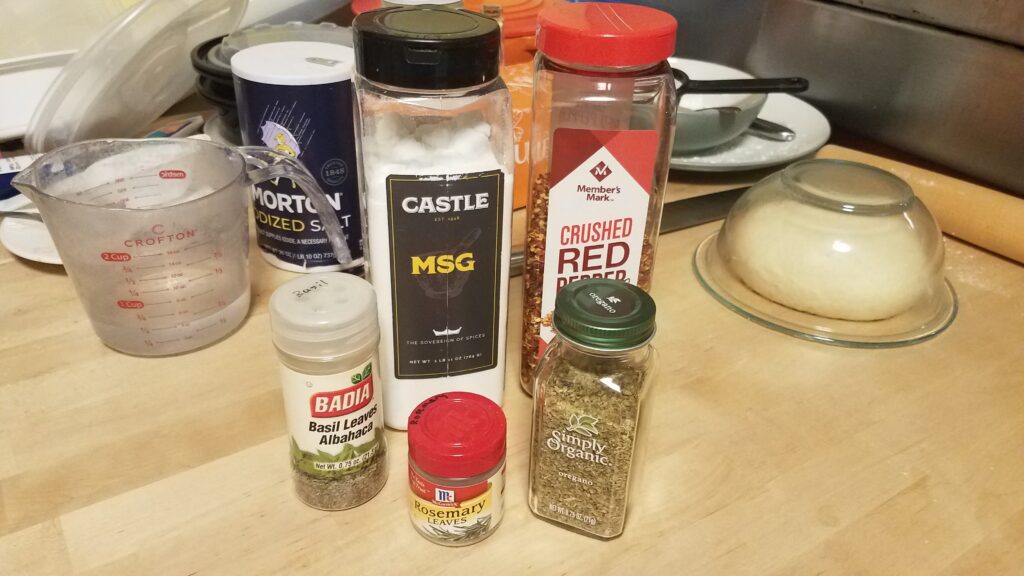
Since I try my hand at a lot of vegetarian/vegan recipes, some of my favorite fermented ingredients, such as miso paste and soy sauce, frequently play roles, even when the dish isn’t Asian. And since many of my recipe sources are more conscious of health factors or just try to focus on cooking with whole foods, I rarely, if ever, see MSG among the ingredients. However, that doesn’t stop me from adding it in place of, say, basic table salt. Unfortunately, I have noticed a big risk with using MSG, as I did in two separate recipes this past week.
There have been disagreements in the scientific community as to whether MSG causes obesity. Some researchers have speculated that it interferes with leptin, the hormone that regulates appetite and metabolism, but other researchers have countered by arguing that people documented eating the most MSG were also eating the most salt. [6] Other sources have argued that it’s not the MSG itself, but the amount of food consumed: if your food tastes better, you’re going to eat more of it. [7] And I can attest to that, having eaten far too much, long after I was uncomfortably full of the dish below…
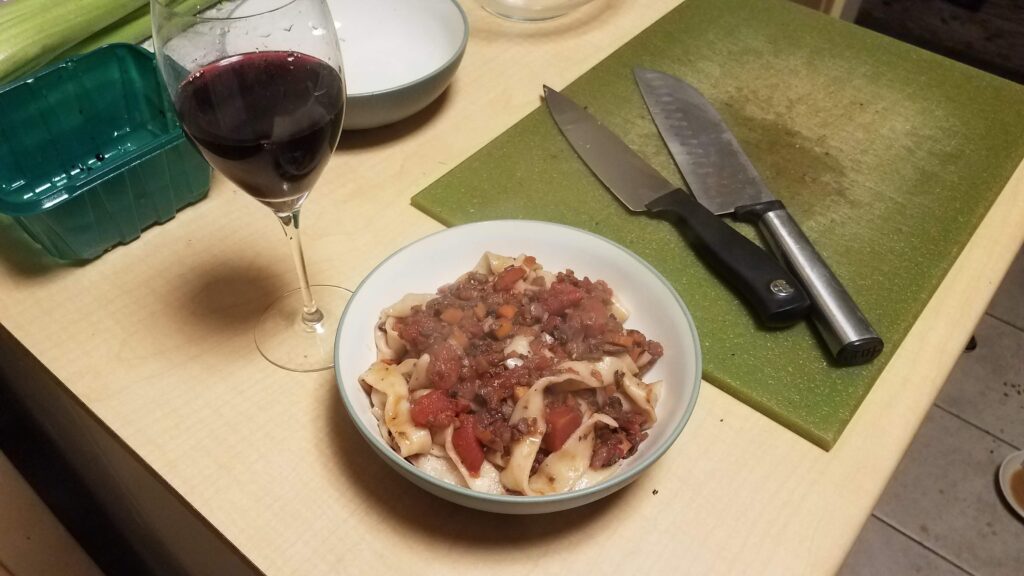
Recipe: Vegan Pasta and Ragù
Since part of my New Year’s Resolution was to cook more seasonal vegan recipes, [8] I’ve been trying to spend more time in the kitchen. But since the first two months of 2024 haven’t turned out quite how I anticipated, I haven’t had as much available time as I originally intended to meal plan (let alone to cook), so I’ve been more focused on what is in the fridge than what is actually in season.
Overall, I think I did a good job with this recipe. Based on availability of carrots, celery, onions, and tomatoes, this dish is technically more of a late summer recipe, though onions and carrots were old and the tomatoes were canned, so it was really just the celery that was in question, and that came from Florida. (NB: ground transport of food from places where it is growing in season is often more sustainable than growing it locally out of season. [9])
Pasta (see more detailed instructions in my Tuscan Agriturismo post [10])
- About 200g each, coarse ground semolina and 00 flour
- 2 pinches of salt
- About 1 cup water (don’t add it all at once, only add what you need)
Ragù (with apologies to Thug Kitchen’s chickpea bolognese, on which this recipe is loosely based – definitely without the MSG [11])
- 1 onion
- 2 ribs celery
- 2 carrots
- 1 lb mushrooms (your preference)
- Half a bulb of garlic
- 1 tsp basil
- 1 tsp oregano
- 1 tsp rosemary
- 1 tsp red pepper flakes
- 1 tsp MSG
- 1 pinch nutmeg
- 1 c red wine
- 2 16oz cans tomatoes (diced, crushed, whatever your preference)
To save time, alternate between the pasta prep and veggie prep as needed: mix and knead the pasta dough, then chop veggies while it’s resting; roll and cut the pasta dough, then chop more veggies while it’s resting. Start the pasta water on the boil while cooking the veggies in the pan, but only add the pasta to the water once the sauce is done. Despite what I thought was good coordination of multiple tasks, it still took me 3 hours from start to finish, on a weeknight. (Of course you can always use vegan noodles from a box, but I really felt like making the pasta from scratch.)
Finely chop the onion, celery, and carrots, then cook on medium in large pan with olive oil for about 5 minutes. Add finely chopped mushrooms and MSG, then cook for another 2 minutes. Stir in garlic, herbs, and pepper flakes, then add the wine and cook down for 2 minutes. Add the tomatoes and mix everything together.
Drop pasta into heavily salted boiling water and move it into the sauce pan as soon as it is done (floating and firm to the bite). Toss pasta in the sauce and serve with a glass of the wine you used in the recipe.
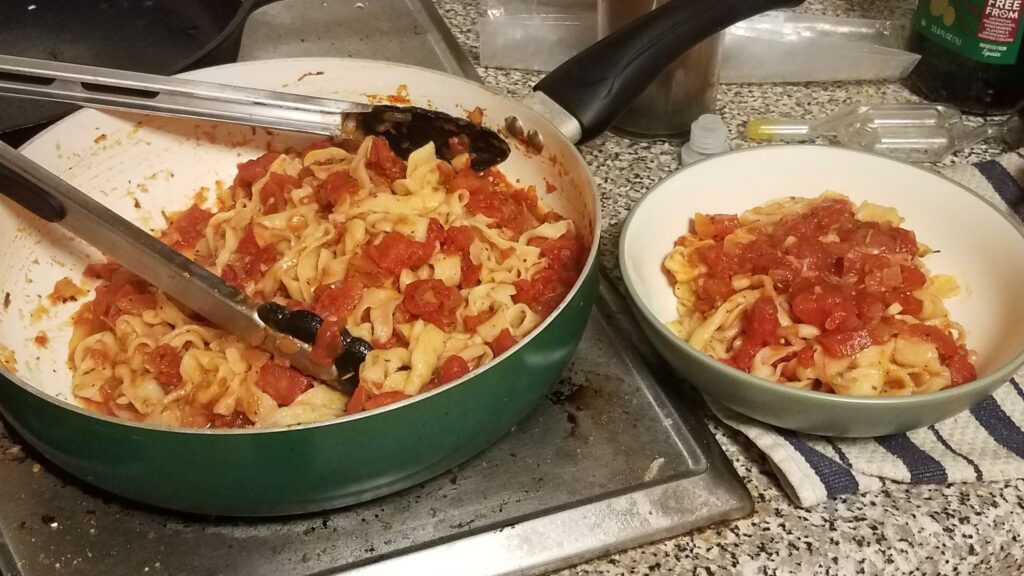
Enjoy! (Not too much!)
[1] https://www.americastestkitchen.com/
[2] https://www.ncbi.nlm.nih.gov/pmc/articles/PMC6952072/
[3] https://radicalmoderate.online/beyond-impossible-meatless-meat-part-1/
[4] https://health.clevelandclinic.org/is-msg-really-harmful
[5] https://health.clevelandclinic.org/is-msg-really-harmful
[6] https://www.reuters.com/article/idUSTRE74Q5SJ/
[7] https://health.clevelandclinic.org/is-msg-really-harmful
[8] https://radicalmoderate.online/new-years-resolutions-for-the-burned-out/
[9] https://radicalmoderate.online/community-supported-agriculture-part-1/
[10] https://radicalmoderate.online/tuscan-agriturismo/
[11] https://www.badmanners.com/book/fast-as-fuck
1 Comment
Tony · February 28, 2024 at 5:42 am
Great content! Thank you.
MSG makes me deathly ill.